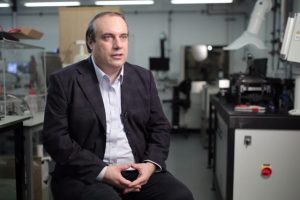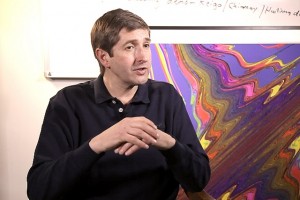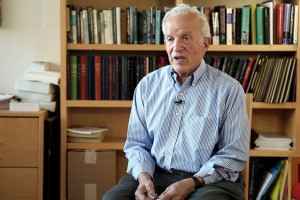Spectroscopy in Graphene
Nanotechnologist Andrea Ferrari on inelastic light scattering, Hall bars, and Cambridge Nanosystems
How does the size of an atom relates to its principal quantum number? What is a non-destructive measurement and how it can be applied to quantum computation? Professor of Physics at MIT Daniel Kleppner explains how you can change quantum state of system even if all it’s elements are in the same state as initial.
If you apply an electric field to an atom, you can pull out the electron. For a hydrogen atom in its ground state the field that you need would be billions of volts per centimeter. But when you get to n=100 the fields that you need are maybe 10 volts per centimeter. The reason is that there are scaling laws in physics, which govern all these simple properties, like the size of the atom. It goes up as n2, where n is the principal quantum number. But if n is equal to 10, it’s a hundred times larger than the ground-state atom, but you can make atoms’ with n a hundred, which is ten thousand times larger than a ground-state atom, they’re almost microscopic in size.
May be the most dramatic use of these atoms was in cavity quantum electrodynamics, which was the subject of the 2012 Nobel Prize to Serge Haroche. The Prize was for work in an area, which is called cavity quantum electrodynamics and it’s the study of atoms radiating in cavities, in which the cavity fundamentally changes the nature of radiation. It’s totally in the quantum regime that we’re interested in here, which is why it’s called quantum electrodynamics. If you put the atom into a cavity, which is tuned to a transition and if the atom’s in the upper state, it will radiate into the cavity faster than in free space.
He developed this method for what’s called a non-destructive measurement, where you can actually look, decide whether there’s zero photons in the cavity or one photon in the cavity. If there is one photon, you leave it in, you haven’t destroyed it, you’ve measured it nondestructively. So that’s interesting by itself, but the really interesting part is that even though the atom leaves the cavity in the same stated that entered and the cavity is left in the same state it was before, the system has changed. And the system is changed, because the atom in the cavity have become entangled, they have joint history, they know about each other.

Nanotechnologist Andrea Ferrari on inelastic light scattering, Hall bars, and Cambridge Nanosystems

Physicist Ronald Walsworth on quantum mechanical transitions inside atoms, blue and red shift for GPS, and use...

Prof. of MIT Daniel Kleppner on the uncertainty principle of quantum mechanics, the butterfly effect, and &la...